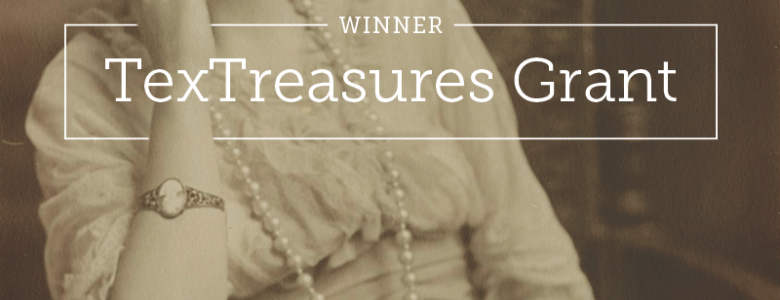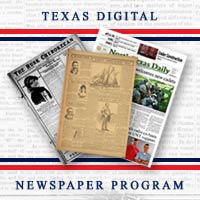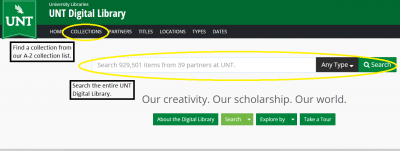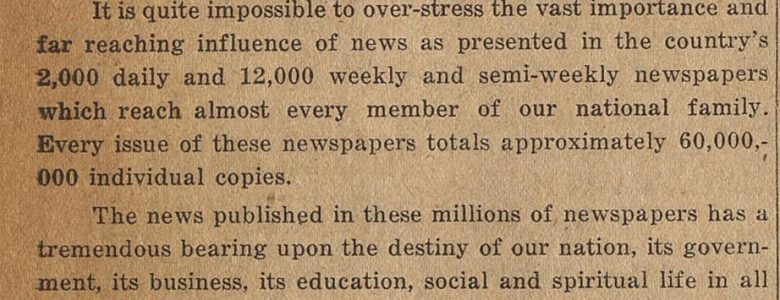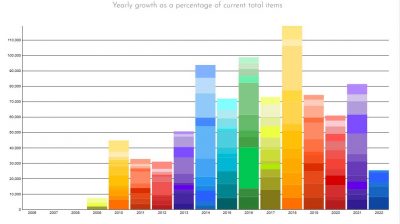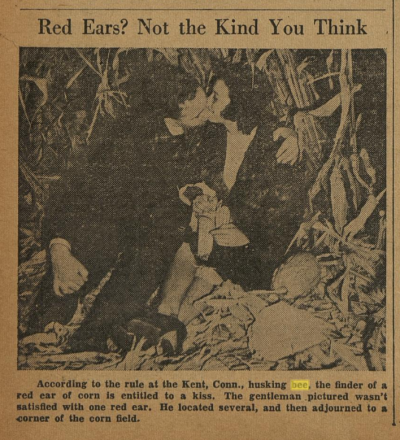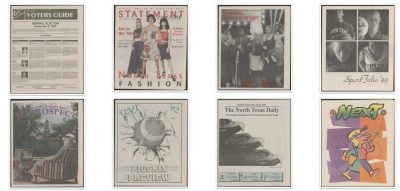Special thanks to Maci Coates for her helpful instructions about Proximity Search.
Proximity Search
The UNT Digital Collections interfaces, including The Portal to Texas History, The Gateway to Oklahoma History, and UNT Scholarly works, incorporate multiple different methods for conducting research. One of the key methods for finding information about people and events within newspapers is Proximity Search.
Proximity Search is best for when you know words that could be in sentence form in a newspaper or other article, for instance if you know that a certain event happened to a certain person. For example, you can input “Smith accident” within 10 words of each other and the search will pull up articles that have a sentence along the lines of “Smith was in a [insert] accident today.” Below are instructions for how to use Proximity Search ).
- After you open Proximity Search in another tab, insert your search terms (ex. Smith accident”) in the first box.
- Select how many words you want to limit the search in. In this example, I chose to see the results of instances where Smith and accident were within 10 words of each other.
3. For the “Limited to” prompt, you can leave it at “Full Text of Item”, or if you know it will be in the Title, Description, etc. this is where you would limit that search.
Self-Archiving Tips for Scholarly Works Authors
UNT Scholarly Works is our open access institutional repository. It provides long-term preservation and access to all forms of scholarship created by faculty, staff, and students here at UNT.
This tip isn’t related to interacting with the repository as a visitor but how to interact with the repository as a creator. We accept a variety of items to the repository, including already published material. A common question or area of concern we encounter with submitting published material to the repository is copyright. We try to ensure we are staying within the bounds of copyright law when we make material available in the repository, so how are we able to host copyrighted work? Self-archiving.

“File:Open Access PLoS.svg” by art designer at PLoS. I converted a pdf into svg is marked with CC BY-SA 3.0.
Many large publishers (like Elsevier, Springer, Routledge, etc.) allow authors to share and archive their work through pre-approved locations, which usually include institutional repositories. Each publisher is different, so we always confirm self-archiving policies with the publisher or editor before we accept the work into the repository. Usually publishers don’t allow the published version to be shared with institutional repositories, but earlier versions of the article, book chapter, conference proceeding, etc. can be hosted in the institutional repository of the authors. Earlier versions are commonly referred to as manuscripts. Again, the rules and definitions for self-archiving manuscripts varies by publisher, but it gives authors a way to distribute their work on their own terms.
When you look to publish your work check out their rules for self-archiving. If you’re passionate about open access or your institution or funder requires openly accessible publications, then this might influence your choice in publisher. Not every publisher allows for self-archiving, or they might have unique requirements which make the process overly complicated. This information is most commonly found using the term self-archiving, but the terms green open access and author rights are sometimes used in relation to these policies.
And when in doubt, reach out to your library! Here at UNT, you can email the repository directly (untrepository@unt.edu) or contact the Repository Librarian (whitney.freeman@unt.edu).
